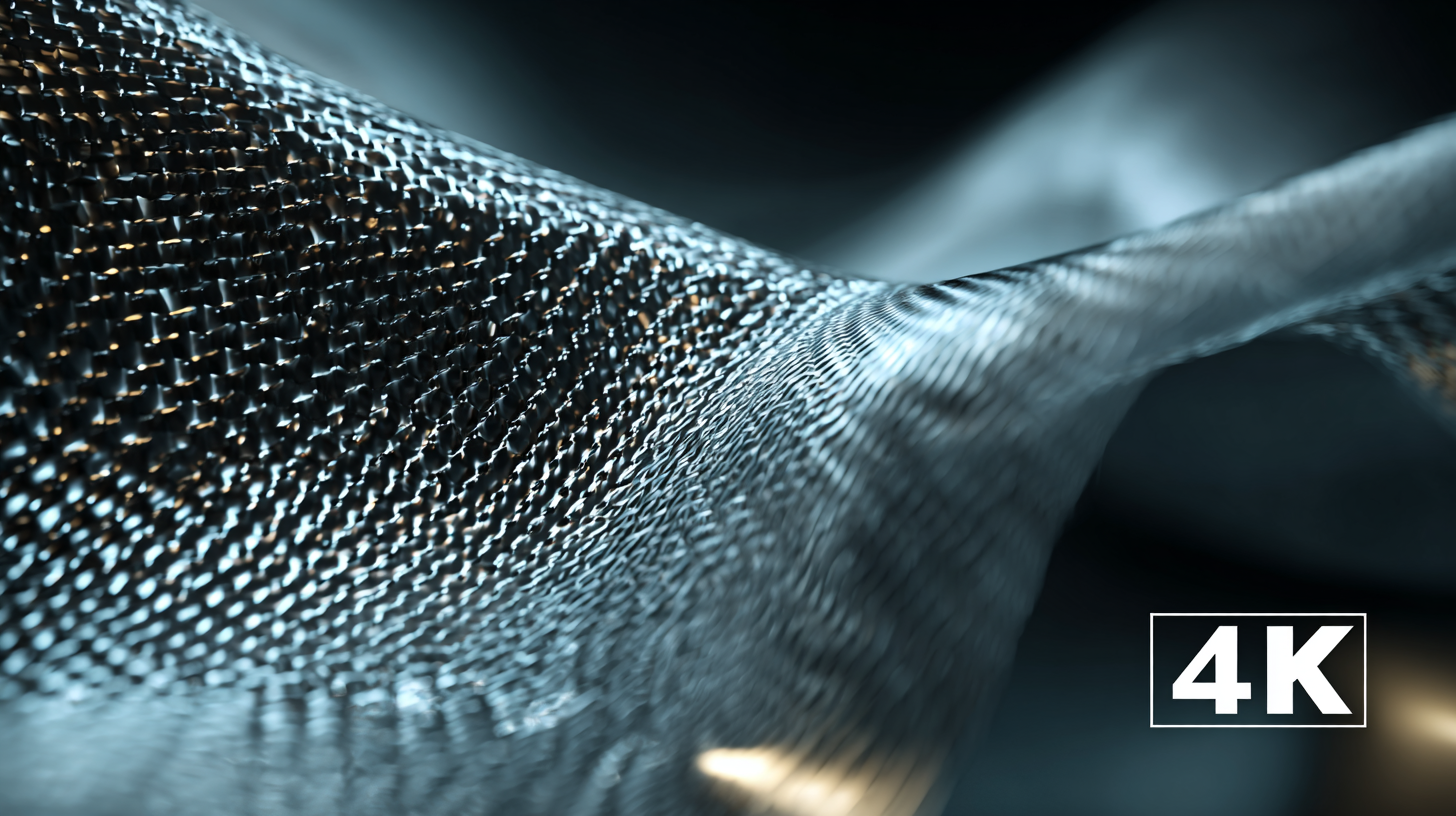5 Innovative Ways the Best Graphite Cooling Film Can Transform Your Technology
In today's fast-paced technological landscape, efficient thermal management is pivotal for the performance and longevity of electronic devices. The rising demand for high-performance systems, coupled with the miniaturization of components, has propelled innovations in materials science, particularly in heat dissipation technologies. According to a recent report by Smithers Pira, the global market for thermal interface materials, including graphene and graphite cooling films, is expected to reach $4.7 billion by 2026, reflecting a compound annual growth rate (CAGR) of 9.1%. Among these advancements, Graphite Cooling Film stands out due to its exceptional thermal conductivity and lightweight properties, making it an ideal solution for modern electronics. This blog will explore five innovative ways the best Graphite Cooling Films can revolutionize technology, enhancing performance while reducing energy consumption and operational costs.

Innovative Applications of Graphite Cooling Film in Consumer Electronics
Graphite cooling film technology
is revolutionizing the landscape of consumer electronics, primarily due to its exceptional thermal conductivity and lightweight properties. According to a
report by MarketsandMarkets, the global thermal management market is projected to grow from USD 13.91 billion in
2021 to USD 24.73 billion by 2026, reflecting an increasing demand for efficient cooling solutions. This surge in demand can be
largely attributed to the miniaturization of devices and the need for better performance under high thermal loads, where graphite cooling films excel by dissipating heat
more effectively than traditional materials.
In smartphones and laptops, where space constraints and heat management are critical, the integration of graphite cooling film enables manufacturers to deliver sleeker
designs without sacrificing performance. A study by Grand View Research indicates that the market for graphite in electronic applications is expected to grow at a
compound annual growth rate (CAGR) of 5.1% from 2022 to 2030. This advancement not only helps in prolonging the lifespan of devices but
also enhances user experience through reduced thermal throttling, ensuring that consumers can rely on their gadgets for more demanding tasks, such as gaming
and video editing, without overheating issues.
Enhancing Thermal Management in Automotive Technologies with Graphite Film
In the rapidly evolving landscape of automotive technology, thermal management has become a defining factor for performance and safety, particularly in electric vehicles (EVs). The integration of innovative materials like graphite cooling films is showing great promise in enhancing these thermal management systems. Graphite films are not only effective in dissipating heat but also lightweight, which is crucial for improving the overall efficiency of EV power electronics. As the flake graphite market is projected to skyrocket to USD 5.48 billion by 2025, we can expect a surge in the adoption of such thermal solutions across the automotive sector.

Recent advancements, including the development of graphene assembled films with over 60 percent higher thermal conductivity compared to traditional graphite films, signal a shift towards materials that can handle increasingly demanding thermal loads. This enhancement is particularly relevant for lithium-ion batteries, where preventing thermal runaway is critical for safety and performance reliability. As automakers continue to push the boundaries of battery technology, transitioning from graphite to silicon-anode systems may revolutionize thermal management strategies, ensuring optimal performance while minimizing risks associated with overheating. Incorporating these innovative films into EV designs not only addresses current thermal challenges but also positions manufacturers at the forefront of technological advancements in the automotive industry.
Revolutionizing the Performance of High-Power Computing Devices
High-performance computing (HPC) is at a critical juncture, driven by advancements in materials science and cooling technologies. Among the most promising innovations is the introduction of high-performance graphite cooling films, which can completely transform the efficiency and reliability of HPC devices. These films, characterized by their ultra-thin and lightweight properties, facilitate superior heat management, enabling computing systems to operate at higher speeds without overheating. As a result, this technology supports sustained performance in demanding applications, allowing researchers and engineers to push the boundaries of what is possible in scientific computing.
Moreover, the integration of these cooling films in HPC infrastructures opens up new avenues for energy efficiency. By minimizing thermal resistance, graphite cooling films reduce energy consumption associated with cooling systems, leading to cost savings and enhanced environmental sustainability. This evolution in thermal management not only improves the overall performance of high-power computing devices but also aligns with global efforts to develop greener technologies. As industries transition towards smarter, more efficient systems, the impactful role of innovative cooling solutions becomes undeniable, revolutionizing the way we approach high-performance computing.
Graphite Cooling Film: A Game Changer for Renewable Energy Systems
In the quest for sustainable energy solutions, the integration of cutting-edge materials has become crucial. One such material making waves in renewable energy systems is graphite cooling film. This innovative technology offers remarkable thermal management benefits, vastly improving the performance and lifespan of energy systems. By effectively dispersing heat, graphite cooling films prevent overheating in solar panels and wind turbines, ensuring they operate at optimal efficiency even under demanding conditions.
The application of graphite cooling films extends beyond mere heat regulation; they play a pivotal role in enhancing energy conversion rates. For example, solar cells utilizing graphite films can significantly increase energy output by maintaining a stable temperature. Furthermore, these films are lightweight and flexible, making them ideal for a variety of renewable energy applications. As technology continues to advance, the incorporation of graphite cooling films can lead to more reliable and efficient renewable energy systems, revolutionizing the industry and propelling us toward a more sustainable future.
5 Innovative Ways the Best Graphite Cooling Film Can Transform Your Technology
| Application Area | Benefits | Impact on Efficiency | Sustainability Contribution |
|---|---|---|---|
| Solar Panels | Enhanced thermal management | Up to 15% increase in energy output | Reduces reliance on cooling systems |
| Electric Vehicles | Improved battery life and performance | Increases driving range by 10% | Supports eco-friendly transportation |
| HVAC Systems | Energy-efficient thermal regulation | Reduces energy use by up to 20% | Minimizes greenhouse gas emissions |
| Data Centers | Effective heat dissipation | Enhances operational reliability | Promotes energy conservation |
| Consumer Electronics | Longer lifespan of devices | Reduces thermal throttling risks | Supports recyclable materials usage |
Addressing Challenges in Aerospace Technology with Advanced Cooling Solutions
As aerospace technology continues to advance, the need for effective thermal management solutions becomes increasingly critical. The recent report from the Global Aerospace Cooling Technologies Market indicates that the market is expected to grow at a CAGR of 6.5% from 2023 to 2030, driven by the demand for high-performance materials that ensure the reliability and safety of aerospace systems. Among these innovative materials, graphite cooling films stand out as a game-changer, offering superior thermal conductivity and lightweight characteristics that traditional cooling systems struggle to deliver.
Graphite cooling films can significantly enhance the thermal management processes in aerospace applications by providing a uniform heat distribution, thereby preventing hotspots and mitigating the risks of component failure. Research from the Aerospace Materials and Engineering journal highlights that optimizing thermal performance through advanced cooling solutions can improve the lifespan of critical components by up to 30%. Additionally, with the incorporation of these films, manufacturers can reduce the overall weight of aircraft, leading to increased fuel efficiency and reduced operational costs, essential factors in today’s competitive aerospace market.
